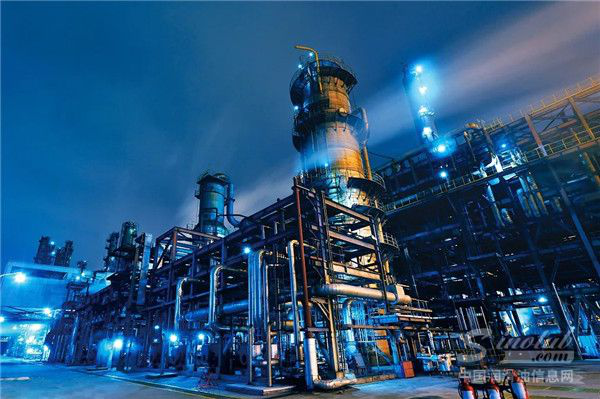Base oil market analysis in April, base oil imports fell sharply year-on-year, and exports increased sharply
2020-05-15 15:36:59
With the increase in supply, the cost of lubricating oil factories is expected to be further reduced; the import of base oil has dropped significantly year-on-year, and the export has increased significantly.

Base oil market analysis in April
In mid-to-late April, after the news of the start of construction of three new production capacity units was released, the market price declined, and downstream users were obviously bearish about the market outlook. With the reduction of refining costs in May, the market price of base oil is expected to sink further. In addition, due to the impact of newly released production in May, the contradiction between market supply and demand has intensified. It is expected that the base oil market will still have 200-300 yuan in May. Yuan / ton downside.
According to market data, the total output of the base oil market in April was 726,450 tons, an increase of 18% from the previous month. In April, the total output of paraffin base oil was 310,500 tons, naphthenic base oil was 133,600 tons, and the second-class base oil accounted for 83% of the total output. The operating rate in April was 45.4%, an increase of 8.87% from the previous month.
Lubricant Market Analysis
The downstream lubricating oil factories used more high-viscosity base oils in April, so the growth rate of high-viscosity base oils was significantly faster than that of low-viscosity base oils.
After the epidemic in the domestic lubricant market, the demand gradually recovered. In April, the demand for automotive lubricants and industrial lubricants increased significantly. The inventories of large and medium-sized lubricant factories were gradually digested and entered the replenishment cycle, which caused the market price of base oil to rise in April. It has risen sharply, and the cumulative increase has been around 300-400 yuan / ton.
In April, the lubricating oil factory resumed work in an all-round way, and the oil consumption reached 94,170 tons, an increase of 18.53% compared with March. Among them, 81 companies have completed the purchase, with a total purchase of 9,255 tons. East China and North China have the largest purchase volume, accounting for 51.43% and 28.96% respectively.
Enterprise inventory: After the full resumption of production, the oil consumption of factories has increased. In early April, enterprise inventory gradually depleted from high to low, and inventory accounted for 26.45%. Starting from the third week, due to the increase in orders from end users and positive shipments, the factory began to replenish the inventory of raw materials. As of the end of April, the proportion of factory inventory rose to 47.92%. The lubricating oil factories are more motivated to pick up the goods than in March, but the epidemic still inhibits economic activities. Small and medium-sized lubricating oil factories purchase raw materials according to the terminal demand and sales volume. The oil production cycle has been extended compared with previous years, and some large factories have resumed the original procurement cycle. , stable purchases on a weekly or monthly basis.
Base oil imports fell sharply year-on-year, while exports increased sharply
According to customs data, the import volume in March 2020 was 173,300 tons, a sharp drop of 109,000 tons or 38.69% year-on-year. In March, under the dual influence of the epidemic and the price war, the price of crude oil at the end of March was significantly lower than the price at the end of February. It fell to around US$20/barrel, and the base oil market also suffered heavy losses. Domestic resources were cut in price one after another, and imported resources fell sharply. In addition, due to the impact of the epidemic, domestic demand was poor, and there were fewer resources in Hong Kong. The import volume fell to 170,000. tons or so. From January to March, the cumulative import was 625,700 tons, down from the same period last year, mainly due to the weakening of demand due to the impact of the epidemic, and the significant decline in the arrival of imported resources. In terms of export volume, as some domestic refineries increased the operating load in March, the output increased compared with February, and the export volume increased significantly, mainly due to the surge in exports to South Korea.
Most of the top ten regions in terms of import volume in March 2020 were in East China, North China, and South China, with less inflow of resources in Northeast China and Central China. From the perspective of single provinces and cities, the top three are Jiangsu Province, Tianjin City, and Zhejiang Province, with import volumes of 43,200 tons, 39,500 tons, and 22,800 tons respectively. The three provinces and cities are the main areas where base oil consumption is concentrated due to their convenient port conditions, and there are many foreign-funded factories, Sino-foreign joint ventures, private lubricant companies and import traders. Therefore, more import resources flow in.
In April, the price of base oil was only pushed up in the middle of the month due to the rising crude oil and the better demand for high-viscosity oil, and the low-viscosity oil followed the trend. The low-level operation has suppressed the confidence of operators in the industry. In the latter half of the year, the price of base oil began to fall, the market shipments slowed down, and the import price continued to decline. In particular, the import prices of Thailand 150BS and Formosa 150N continued to decline. Down 500-700 yuan / ton. It is difficult to see a significant improvement in downstream demand, and the supply of domestic resources is abundant. It is expected that the import volume of base oil in April will decrease month-on-month.

